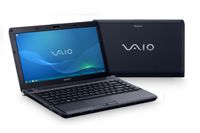IT Pro Verdict
If there's room in your IT budget for a fleet of top-end laptops you're lucky indeed, but the S11 nonetheless offers excellent value for money. It costs a little over a grand, and while there's no doubt that the quad-core processor, 4GB of RAM and massive hard disk will be overkill for most office workers, anyone who has to deal with image editing for work, or delivers presentations that include HD video, will appreciate the extra speed. Indeed, anyone who's found themselves shutting down a few applications because their laptop has ground to a halt will appreciate the S11's performance. Then consider the excellent build quality, good screen and portability - both in terms of battery life and weight - and this Sony is the best choice for anyone looking for a new business notebook.
The Sony Vaio VPCS11V9E/B is a lovely machine from a usability standpoint. Arguably, the only manufacturer with a better grip on making laptop keyboards is Lenovo - the S11 has a chiclet design (Scrabble tiles for keys) with wide gulleys between each key.
There's not much room for the ingress of crumbs and other undesirable contaminants, and the keyboard feels solid and unyielding, with a near-perfect level of resistance for fast touch-typing. We found a solitary word of caution in the spacebar, which on our review system picked up an annoying squeak after a few days' use. The trackpad has a faux-carbon fibre effect, and the wrist-rest is the only strange design feature, with a slightly raised, rough texture - whether you like it will be a matter of taste, but it's by no means a deal-breaker.
Users don't get much in the way of extras. Volume, screen brightness, video output and hibernation are all controlled by a combination of the Fn key and one of the F-keys; there are no media controls for shuffling through tracks. You do get a pair of buttons above the keyboard. The Vaio button - under Windows - does nothing more than mute and unmute the volume. The other, marked "Assist" launches Vaio Care. We were hoping for an application suite similar to Lenovo's ThinkVantage, which rolls a number of very useful tools for maintenance and trouble shooting into one package, and Vaio Care works in a similarl way.
Most of the things Vaio Care can do are simply Windows features, though, such as audio trouble shooters and Windows Restore. There is one new application called Vaio Recovery, which allows you to create a disk image, or reset the system to its factory state. Rather irritatingly, the Assist button above the keyboard also works when the system is turned off, launching the machine straight into recovery mode. While we'd rather see the feature than not, its placement - and the placement of the power button on the right hand edge - mean we'd expect users to occasionally find themselves loading the disk recovery software when they wanted to simply start the computer.

